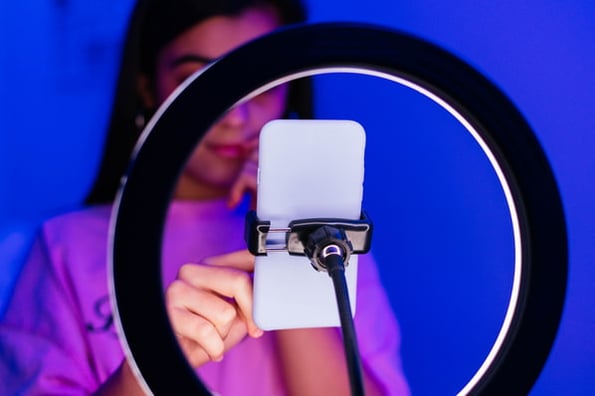Having found success on TikTok, Thomas Petrou co-founded The Hype House, a collaborative content house where TikTokers lived together, created videos, and grew their following with Petrou’s guidance and support.

He is one of the many content creators making a name for themselves in the creator economy — a relatively new concept but, as anyone can become a content creator, the potential for significant growth is clear.
In this post, we’ll explain exactly what the creator economy is, and go over key stats that marketers should know.
What is the creator economy?
The creator economy is where creators, from YouTubers to bloggers, share content with audiences and generate revenue from monetization opportunities. It also includes the businesses that creators launch to further grow their content.
Businesses have a place in the creator economy as well; specifically those that create tools for creators to build their impact, reach, and audience. For example, Patreon helps creators launch premium membership programs and Virtual Dining Concept helps creators launch restaurants in ghost kitchens. Creators will also continue to look to businesses to offer the tools they need to meet their goals, requiring businesses to be on top of the trends.
Marketers are also impacted by the creator economy, as social media users put more trust in their favorite influencers and creators than the brands they follow. As a result, creating an impactful ad for social media can require partnering with influencers that have an engaged audience that trusts their recommendations.
The creator economy is only set to grow. Given this, it’s important to stay on top of the current state of the creator economy — below we’ve compiled a list of stats that demonstrate this.
Creator Economy Stats For Marketers To Know
General Creator Economy Stats
- 30% of 18-24 year olds and 40% of 25-35 year olds call themselves content creators. (HubSpot Blog)
- Creators are most likely to be young (63% Gen Z) and female (48%). (Global Web Index)
- 46.7% of creators are full-time creators. (ConvertKit)
- The top types of creators are educational creators, bloggers, coaches, writers, and artists. (ConvertKit)
- 37% of niche creators have engaged in a brand collab at least once. (Linktree)
- Full time creators use an average of 3.4 channels for audience engagement. (ConvertKit)
- The average amount of time spent creating content each week is 1 – 5 hours. (Linktree)
- Content creators say their top challenge is getting their content found. (The Tilt)
- 61% of content creators say they post content for fun, 34% post because they’re passionate about the content they share, and 31% post content to explore a new potential hobby. (Global Web Index)
- The most common creator launchpad in 2021 was Instagram. (ConvertKit)
- 58% of creators produce 2-4 types of content. (Linktree)
- Most often, full-time creators create social media posts, emails/newsletters, and articles/blog posts. (ConvertKit)
- 52% of marketers lean on creators to strengthen their social community, and 41% say they want to work with content creators to promote their brand values. (Sprout Social)
- The most common types of content marketers hire creators to make are educational content, unboxing or reveals, and testimonials. (Sprout Social)
- The top earning types of creators are educational creators, coaches, podcasters, influencers, and marketers. (ConvertKit)
- A majority of content creators share between 0 and 10 sponsored posts per year. (Influencer Marketing Hub)
Creator Economy Revenue Stats
- The creator economy currently consists of over 300 startups. (Influencers Club)
- The creator economy market size is currently estimated at $104.2 billion. (Influencers Club)
- The total valuation of creator economy startups was $5 billion in 2021. (Influencers Club)
- A majority of content creators say their highest earning revenue source is brand deals. (Influencer Marketing Hub)
- It takes content creators an average of six and a half months to earn their first dollar. (The Tilt)
- Content creators prefer to monetize their content on Instagram and TikTok. (Influencer Marketing Hub)
- Full time creators leverage 2.7 income streams on average. (ConvertKit)
- 59% of beginning creators haven’t monetized their content yet. (Linktree)





